About Us
What Is a Diamond?
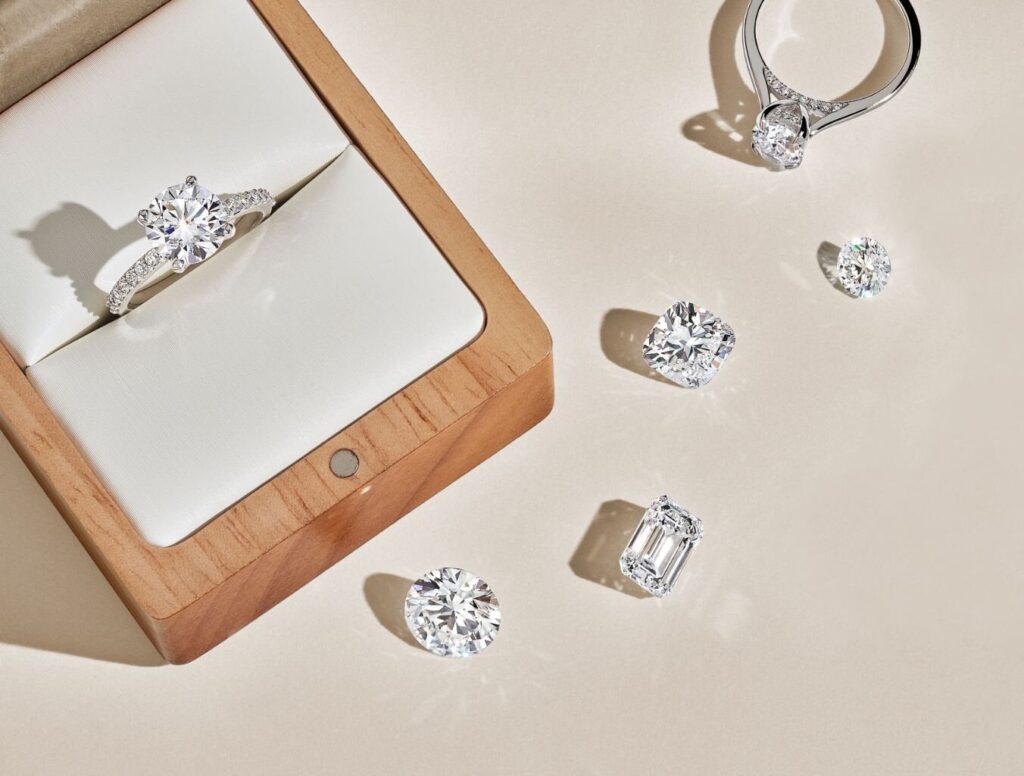
Over a billion years ago, deep beneath the Earth’s surface, carbon atoms bonded tightly under high temperatures and extreme pressure, resulting in the world’s hardest natural mineral: diamond.
Hidden for millions of years, diamonds only reached the Earth’s surface after volcanic activity transported them upward in magma. Then, in the 4th Century BC, the first diamonds were found in India. Today, as they have been for centuries, diamonds are one of the most beautiful and coveted objects on Earth.
Craftmanship & Quality
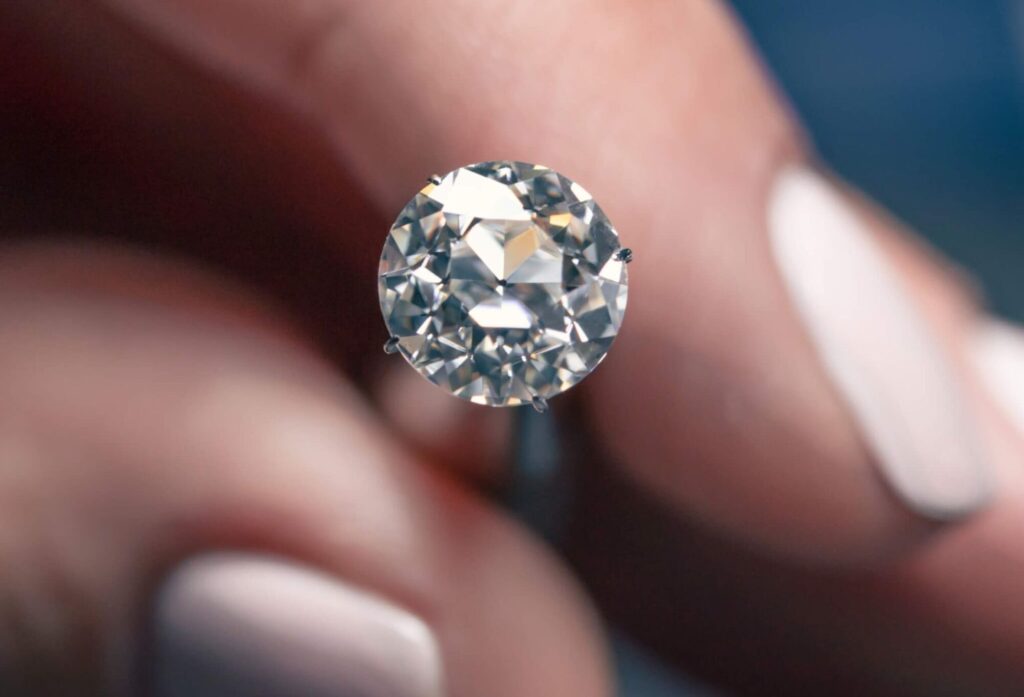
From the day Evenings was founded in 2005, we set out to revolutionize the diamond industry. So, we pioneered a new standard with Beyond Conflict Free™ Diamonds that surpasses the Kimberley Process to provide our customers with truly ethical, sustainable, and stunning diamonds.
We are committed to continually transforming the industry for good: we know where our diamonds come from and share that information with you — so you can feel good about the jewelry you’re wearing.

Types of Diamonds
Natural Diamonds
Natural diamonds form deep within the Earth under extreme conditions of heat and pressure over billions of years. They are comprised of nearly 99.95% carbon—making diamonds the only gemstone constructed of a single element. They are the hardest naturally occurring materials found on Earth and gemstone-quality diamonds are one of the most sought-after. Because of their limited quantity, natural diamonds have been cherished for their enduring value and passed from generation to generation.
Lab Diamonds
Lab diamonds are optically, chemically, and physically the same as natural diamonds. In other words, they look, feel, and are identical. Their difference lies only in their origins — natural diamonds form within the Earth, and lab diamonds are grown by professionals with specialized equipment. Another difference relates to cost; as lab grown diamonds are less rare than natural diamonds, they often come at a much more accessible price.

Cut
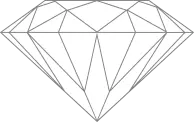
Color
Color references the absence of color within a diamond. The scale ranges from D (colorless) to Z. Diamonds outside this range are considered ‘fancy colored.’

Clarity
Clarity references the absence of internal inclusions and surface blemishes on a diamond. The scale ranges from Internally Flawless to Included.

Carat
Carat is a measurement unit that describes a diamond’s weight, not its size. One carat is roughly the weight of a paperclip.
Diamond Certification

Many diamonds, including all Brilliant Earth diamonds, are certified by independent institutions such as the Gemological Institute of America (GIA), the International Gemological Institute (IGI), HRD Antwerp, and the Gem Certification & Assurance Lab (GCAL). To grade a diamond, trained professionals use specialized equipment to assess cut, color, clarity, and carat. They may also plot a diagram of its clarity characteristics and graphic representation of its proportions. Certifications may also include notes on symmetry, polish, fluorescence, shape, or measurements.
Certifications are essential as they detail not only the quality characteristics of your stone but also its authenticity. During the certification process, most diamonds are laser inscribed with a unique number that correlates to the number on its certification — meaning that, under magnification, you’ll always be able to visually confirm that the diamond you have is the same one that was certified. We digitally deliver to customers with their purchase. Providing digital certifications in lieu of paper certifications decreases our paper use, the size of our packaging, and our shipping emissions, therefore reducing our carbon footprint.

Types of Diamonds
Shape refers to the external appearance of a diamond’s outline. It is distinct from cut, which refers to a diamond’s internal facet arrangement. The most popular shape is round, and any other shape (such as emerald, marquise, or oval) is considered a ‘fancy shape.’







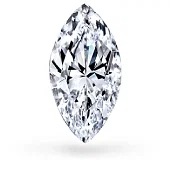


Diamond Hardness

Diamond is the hardest naturally occurring mineral found on Earth. It is so hard that it ranks at the highest hardness level (a 10) on the Mohs scale, a rating system developed in 1822. The hardness of a diamond signifies its resistance to scratching — and it’s true that only a diamond can scratch a diamond. Therefore, diamonds are ideal for everyday wear, making them perfect as center stones in jewelry as well as engagement rings.

Diamond Fluorescence
Diamond fluorescence refers to the effect that ultraviolet (UV) light has on a diamond. It is graded on the intensity of the diamond’s reaction to long-wave UV, which is an integral part of daylight. Fluorescence may cause diamonds to emit a blue or yellow glow under UV light, but it does not have a noticeable effect on diamond appearance under regular lighting, nor does it affect the structural integrity of the stone.
Diamond Price

Diamond price varies greatly depending on rarity and quality. Diamonds with higher grades in cut, color, or clarity, or diamonds with a larger carat weight, are rarer and therefore more expensive than those with lower grades or carat weights. Lab grown diamonds are less rare than natural diamonds found in the Earth and are therefore less expensive.
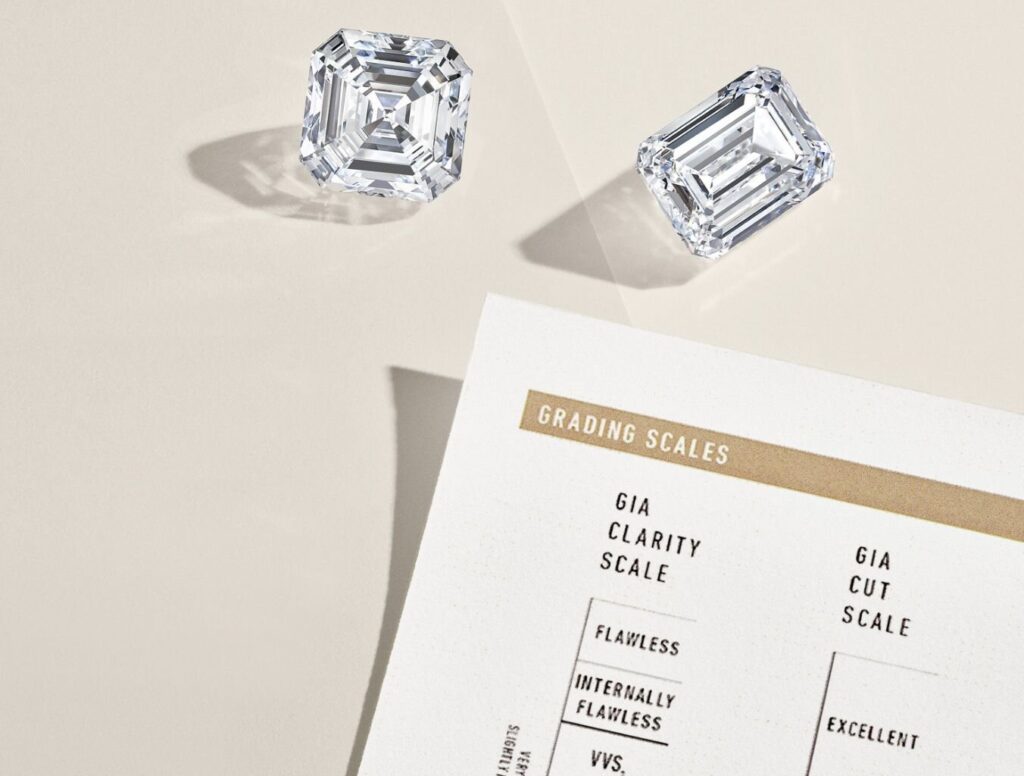
Diamond Grading Scale
Diamonds are graded on a scale developed by the Gemological Institute of America (GIA) that analyzes cut, color, clarity, and carat. These 4 C’s are universally acknowledged as the accepted standard in describing and determining the quality of any diamond.
Diamond Price

When deciding on your dream diamond, it’s essential to do the following:
Study up on the 4 C’s. To find the best diamond for you, learn to balance the 4 C’s with your budget. If you’re looking for a high-carat stone, you may have to sacrifice cut, color, or clarity to keep it affordable. Or vice versa, if you’re looking for a colorless stone, you may have to sacrifice carat, cut, or clarity. And remember, no two diamonds are identical, and there’s no right answer to how a diamond should look.
Pick your favorite shape. While round brilliant diamonds are the most popular, remember that there are many other shapes to choose from. Here at Evenings, we offer eight shapes in addition to round: oval, cushion, princess, radiant, emerald, marquise, pear, and asscher.
Make sure that it’s certified. Your diamond must come with a digital or physical certification from an independent institution such as GIA, IGI, HRD, or GCAL to prove its authenticity and quality. All Evenings diamonds are certified, and any other diamond you’re considering purchasing should be, too.
At Evenings, we’re proud to offer our customers an incredible assortment of sustainable and ethical diamonds — in all shapes and sizes — so we suggest using our filters to navigate our diamond searches best. Once you’ve determined the shape and 4 C’s you’re hoping for, filter away to narrow it down to the perfect piece.
Our experts are also available 24/7 via chat, phone, text, and email to assist with questions big and small. If you’re interested in viewing diamonds in person, schedule an appointment and come see us.





